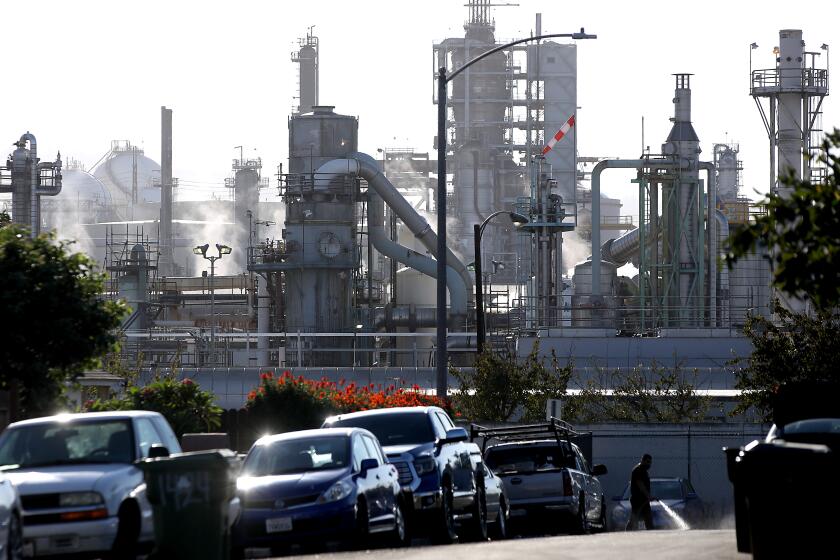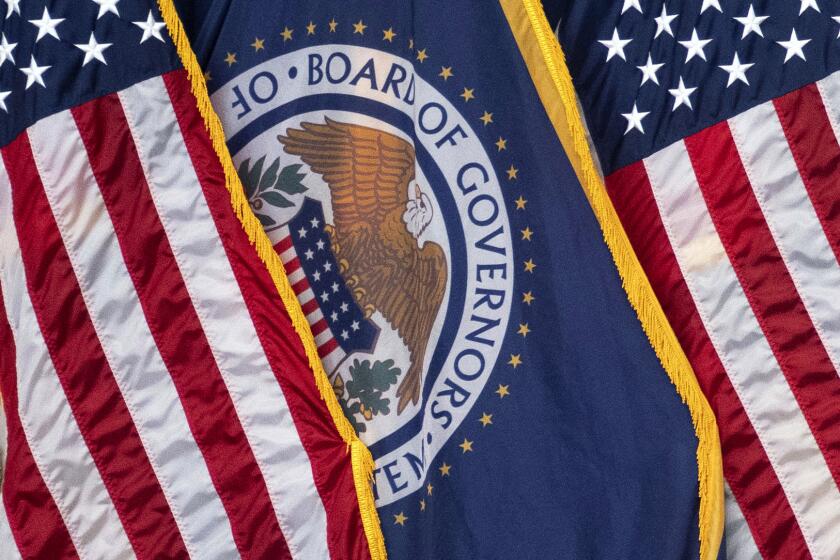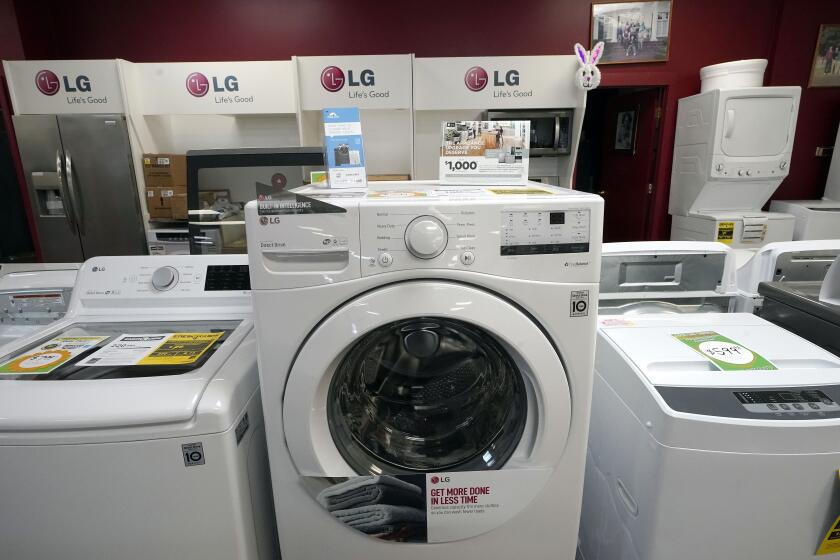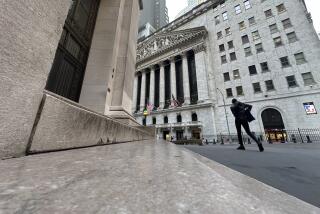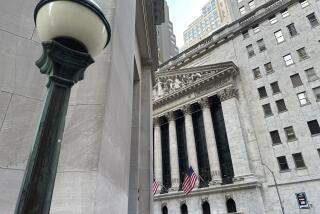Wall Street ticks higher as pressure eases from the bond and oil markets
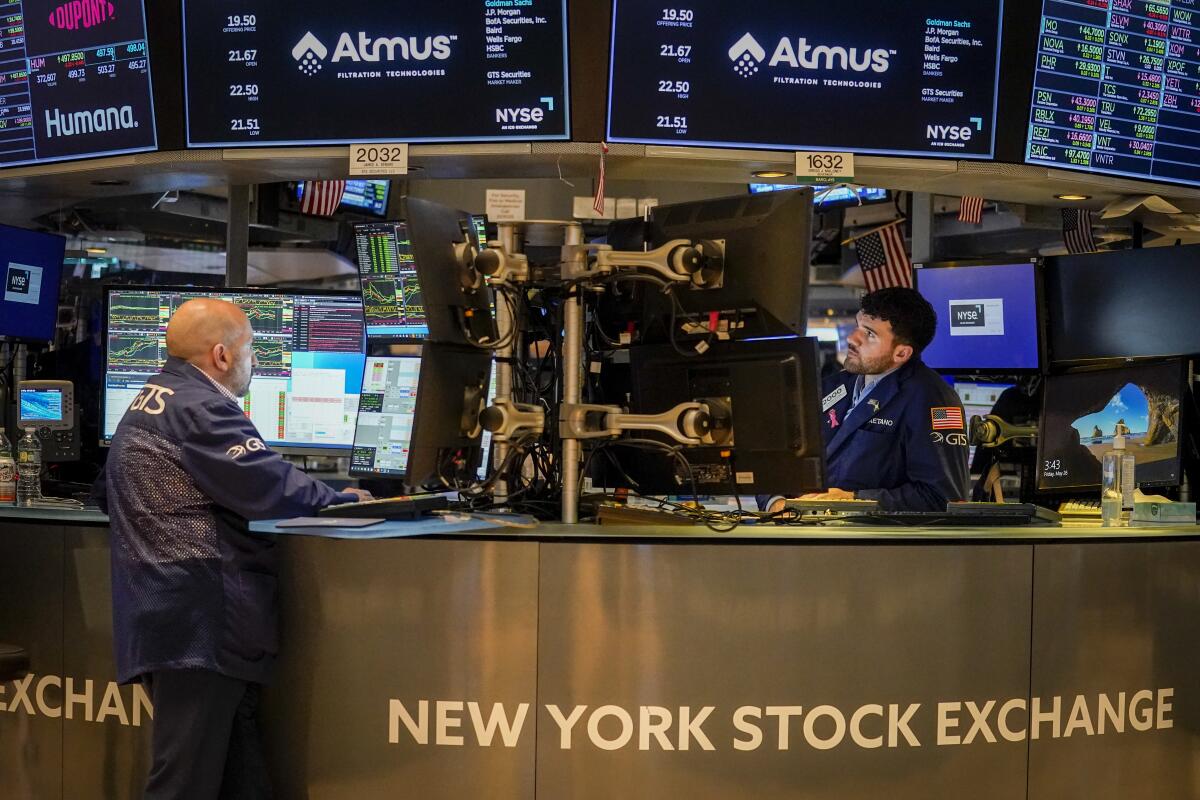
- Share via
Wall Street ticked higher Thursday to trim its sharp loss for September after pressure from the oil and bond markets relaxed a bit.
The Standard & Poor’s 500 rose 25.19 points, or 0.6%, to 4,299.70. The Dow Jones industrial average added 116.07 points, or 0.3%, to close at 33,666.34, and the Nasdaq composite advanced 108.43 points, or 0.8%, to 13,201.28.
A drop in oil prices took some heat off the stock market, a day after crude reached its highest price of the year. Treasury yields also relaxed to give the stock market more of a breather, particularly large tech companies.
High California gas prices and accusations of price gouging play into Gov. Gavin Newsom’s plan to cap oil refinery profits in California.
A 2.1% climb for Meta Platforms and a 1.5% gain for Nvidia were two of the strongest forces lifting the S&P 500.
Stocks, though, are still on track for their worst month of the year as Wall Street grapples with a new normal in which interest rates may stay high for a while. The Federal Reserve has already pulled its main interest rate to the highest level since 2001 in hopes of extinguishing high inflation, and it indicated last week that it may cut rates by less next year than earlier expected.
It’s a sharp departure from prior years for investors, who counted on the Fed to cut rates quickly and sharply whenever things looked dicey. High rates slow the economy by design and hurt prices for stocks and other investments, while lower rates can goose financial markets.
The threat of higher rates for longer has pushed Treasury yields up sharply in the bond market, and they rose further into heights not seen in more than a decade. The yield on the 10-year Treasury climbed above 4.67% in the morning, near its highest level since 2007. It later fell back to 4.57%, down from 4.61% late Wednesday.
The two-year Treasury yield, which moves more on expectations for Fed action, slipped to 5.06% from 5.14%.
Yields squiggled after the latest batch of reports on the economy.
The Federal Reserve left its key interest rate unchanged for the second time in its last three meetings, a sign that it’s moderating its fight against inflation.
One said fewer workers applied for unemployment benefits last week than economists expected. It’s the latest signal of a solid job market, one that has helped prevent a recession, but it also may be feeding upward pressure on inflation.
A separate report said the U.S. economy grew at a 2.1% annual rate during the summer, after some revisions to earlier estimates. That was slightly less than economists’ expectations, but economic growth looks like it remained solid through the third quarter at least. The question is how the trend goes in the final three months of the year.
Altogether, the reports didn’t give anything to change investors’ minds about the Fed staying tough on interest rates, something that Wall Street calls a “hawkish” stance on policy.
“The waiting game continues,” said Mike Loewengart, head of model portfolio construction at Morgan Stanley Global Investment Office.
“Until there’s a clear break from this holding pattern, investors will be living with a hawkish Fed, higher-for-longer interest rates and, likely, additional market volatility,” he said.
Inflation in the U.S. edged up in July after 12 straight months of declines. But core inflation matched the smallest monthly rise in nearly two years.
Many other challenges are also looming over the economy and Wall Street besides the threat of higher interest rates for longer.
Most immediate is the threat of another U.S. government shutdown as soon as this weekend, though financial markets have held up rather well during past shutdowns.
Another looming threat eased a bit, as crude oil prices pulled back. A barrel of benchmark U.S. crude oil sank $1.97 to settle at $91.71. It’s still up sharply from below $70 during the summer, which has added to worries about inflation. Brent crude, the international standard, also fell by more than $1 per barrel.
On Wall Street, Peloton jumped 5.4% after the online exercise bike and fitness company announced a five-year partnership with athletic wear maker Lululemon Athletica.
Trimble rose 6.5% after it said it will get $2 billion in cash and a 15% ownership stake in a joint venture with agricultural machinery company Agco. Trimble will contribute much of its precision agriculture business to the joint venture. Agco rose 2.8%.
On the losing end of Wall Street, Micron slumped 4.4% despite reporting better results for the latest quarter than analysts expected. Its forecast for upcoming profitability fell short of some analysts’ estimates.
The U.S. economy grew at a 2.1% annual rate in the quarter from April through June, extending its sturdy performance despite higher interest rates.
In stock markets abroad, the Hang Seng fell 1.4% in Hong Kong after trading in shares of property developer China Evergrande Group was suspended. The company said Thursday night that authorities had informed it that its chairman, Hui Ka Yan, had been subjected to “mandatory measures in accordance with the law due to suspicion of illegal crimes.”
Evergrande is the world’s most heavily indebted real estate developer and is at the center of a property market crisis that is dragging on China’s economic growth.
AP writers Yuri Kageyama and Matt Ott contributed to this report.
More to Read
Inside the business of entertainment
The Wide Shot brings you news, analysis and insights on everything from streaming wars to production — and what it all means for the future.
You may occasionally receive promotional content from the Los Angeles Times.
